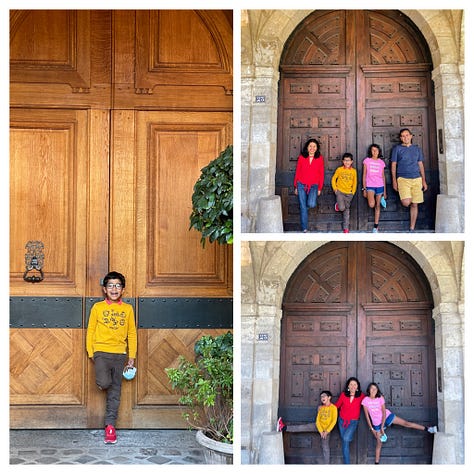Are your products delivering on your customer promise?
5-question framework useful for evaluating the products you build or use
TL;DR
Q1: Do you onboard your customers for success in an easy and intuitive way? Q2: How intuitively do you deliver on your customer promise? I also call it 'can your users navigate to outcomes without friction.' Q3: Is your visual communication aligned with your product's value proposition? (consider visual aesthetics) Q4: Does your product provide positive reinforcement or feedback to help customers achieve their desired outcomes? Q5: Bonus - Does your product have (unexpected) delightful features to put a smile on users' faces?
DETAILS
Q1: Do you onboard your customers for success in an easy and intuitive way?
My example pick here is Duolingo. Language learning can be challenging. Duolingo onboarding experience is designed to be fun, engaging, and personalized. The app uses gamification and personalized learning plans, which are created through targeted questions right during onboarding, to make the process of learning a new language feel like fun on Day 0. Additionally, Duolingo provides clear instructions, time commitment requirements, and feedback to help users succeed in achieving their language learning goals.






Q2: How intuitively do you deliver on your customer promise? I also call it 'can your users navigate to outcomes without friction.'
My example pick here is Uber for delivering on their promise intuitively every-single-time. Their promise to customers is - Convenience: You can request a ride from anywhere and get picked up within minutes. The app allows you to track your driver's location in real-time, and you'll receive notifications when the driver arrives. Pricing Transparency: You'll get a fare for the ride before you request it, and the app is cashless payments. Driver and Passenger Safety: The 2-way rating system maintains accountability and ensures a better overall experience with the right incentives. Additionally, background checks for drivers and GPS tracking are also in place for added safety.
Q3: Is your visual communication aligned with your product's value proposition? (consider visual aesthetics)
My example pick here is Headspace. Headspace app's visual aesthetics are designed to help users feel calm, centered, and at peace, creating an ideal environment for meditation and mindfulness practices. The Headspace app is known for its calming and visually soothing aesthetics. The app's design features soft pastel colors, gentle animations, and whimsical illustrations that help create a peaceful and relaxing environment for users. The interface is minimalistic, with clean lines and intuitive icons that make it easy to navigate. One of the key features of the Headspace app is its use of calming animations, such as the "Breathing Bubble" and "Rainy Day Antidote" animations, which help users relax and focus on their meditation or mindfulness practice. The app's visual design also includes nature-themed backgrounds, such as mountains, forests, and beaches, which further enhance the sense of tranquility and relaxation.




Q4: Does your product provide positive reinforcement or feedback to help customers achieve their desired outcomes?
My example pick here is Strava. Strava has a feature called Suffer Score, which calculates the intensity of a workout based on the user's heart rate. The score measures how much the user has "suffered" during the workout, with a higher score indicating a more intense effort. While the calculation details of Suffer Score are not crucial in this context, what matters is that it generates a metric that users can use to gauge their progress. Many people track their progress and challenge themselves by using Suffer Score to set goals and push themselves harder during workouts. The tool is also a useful way to monitor improvements over time and encourages competition as users can compare their workouts with other Strava users.
Credit : Strava Blog
Q5: Bonus - Does your product have (unexpected) delightful features to put a smile on users' faces?
My example pick here is Google Photos Beyond the expected features of photo backup, organization, editing, magic erasers, and deletion of duplicate or low-quality photos, Google Photos does one really neat thing: It Recommends. By analyzing a user's photos, it proactively turns them into collages, animations, color pops, throwbacks, and other creative formats that are fun to share with friends and family. These suggestions happen when you least expect them, are not part of the regular user journey, and can apply to old nostalgic pictures or recent photos from a birthday party you're still trying to sort through.



I hope you find this 5-question framework useful for evaluating the products you build or use. If you would like to discuss more ideas, you can always reach out to me here.

